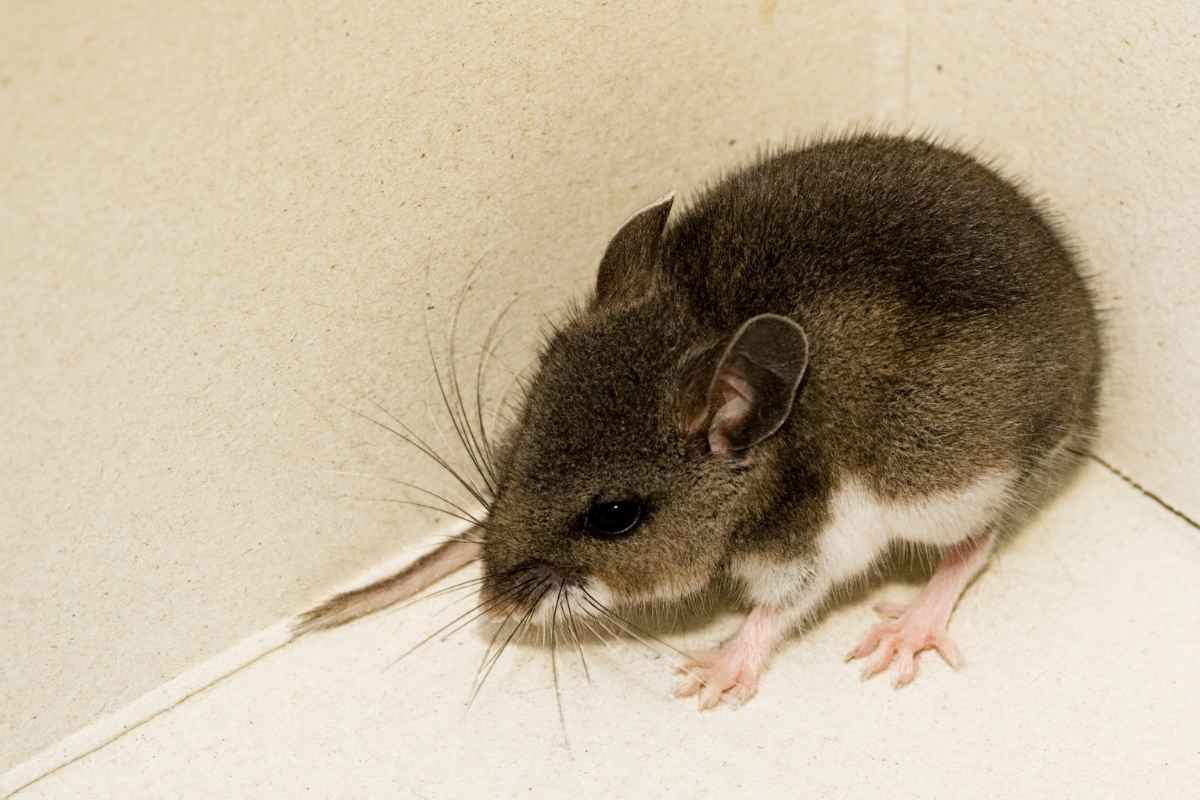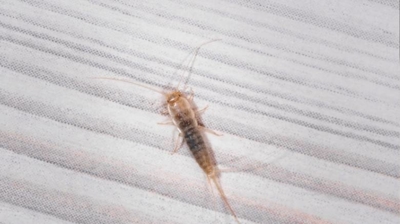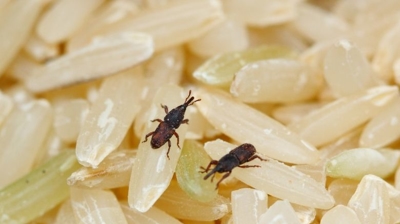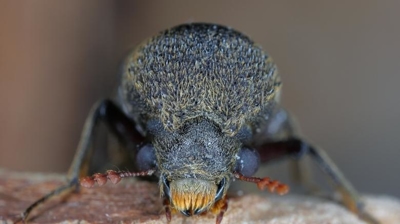
Deer Mouse Control Services

Are Deer Mice Harmful?
Deer mice (Peromyscus maniculatus) can be considered harmful in several ways, primarily due to their role as disease carriers, and their impact on stored food and property:
- Disease Transmission – Deer mice are significant carriers of hantavirus pulmonary syndrome (HPS), a potentially fatal respiratory disease transmitted through their urine, droppings, and saliva. Humans can contract hantavirus by inhaling airborne particles contaminated with these substances, making infestations particularly dangerous. Additionally, deer mice can harbor Lyme disease carrying ticks, as well as other pathogens such as salmonella and leptospirosis, which can contaminate food and surfaces.
- Contamination of Food and Property Damage – As nocturnal foragers, deer mice seek shelter in homes, barns, and storage areas where they can chew through packaging and contaminate food supplies. They also gnaw on insulation, wiring, and furniture, potentially leading to costly repairs and even fire hazards due to exposed electrical wiring.
- Reproductive Rate and Infestation Potential – Deer mice reproduce rapidly, with multiple litters per year, making infestations difficult to control once established. Their ability to enter buildings through tiny gaps and their adaptability to different environments contribute to their persistence as a pest problem.
Given these risks, proper exclusion, sanitation, and, if necessary, our professional mouse control measures are essential in managing deer mouse populations and reducing their harmful effects.
Learn more: Do Deer Mice Bite?
Deer Mouse Control
Hiring our professional pest control for deer mice is strongly recommended for several reasons, especially if you want a safe, effective, and long-lasting solution:
- Accurate Identification: Deer mice can be confused with house mice or other small rodents. Professionals can correctly identify the species, which is critical because deer mice are carriers of hantavirus, a potentially serious respiratory disease. Correct identification ensures the safest and most effective control measures are used.
- Comprehensive Inspection: Our professionals don’t just deal with visible mice—we inspect for gaps in walls, foundation cracks, vents, or rooflines where mice can enter, nesting sites such as attics, crawl spaces, storage areas, and hidden voids, and food and water sources such as kitchens, pantries, or areas where mice can access water. A thorough inspection reduces the likelihood of a reinfestation.
- Safe and Effective Trapping or Baiting: While DIY methods are available, our professionals have access to industrial-grade traps and baits that are more effective and strategically placed. We also minimize exposure to pets and children, reduce the risk of mice dying in inaccessible areas, which can cause odor problems, and use integrated pest management strategies rather than relying solely on poisons.
- Disease Prevention: Deer mice are known carriers of hantavirus, leptospirosis, and other pathogens. Handling traps, droppings, or nests without proper precautions can expose you to these risks. Our professionals are trained in safe removal of contaminated materials, sanitization of affected areas, and protective equipment usage.
- Long-Term Prevention: A one-time kill is rarely enough. Our professionals provide exclusion services, sealing gaps and entry points to prevent future infestations, guidance on how to remove attractants in your home or property, and ongoing monitoring, ensuring the infestation is completely eliminated.
- Cost and Time Efficiency: Hiring our professionals saves money and time in the long run. DIY attempts can lead to incomplete control, repeated infestations, property damage, or exposure to disease.
- Peace of Mind: Knowing that our trained, licensed team has handled the problem safely and effectively provides peace of mind—especially when dealing with a species that can pose serious health risks.
Deer mice infestations are not just a nuisance—they’re a health risk. Our professional pest control ensures proper identification, safe removal, and prevention, which is something DIY approaches rarely achieve as thoroughly.
Learn more: How To Get Rid Of Deer Mice
What Do Deer Mice Look Like?
Deer mice (Peromyscus maniculatus) are small rodents with distinct physical characteristics that make them easily recognizable. Here's what deer mice generally look like:
- Size: Deer mice are relatively small, typically measuring around 6 to 8 inches in length, including their tails.
Body Shape: They have a compact body with a slender build and a long, thin tail. Their bodies are well-adapted for agility and movement. - Fur: Their fur varies in color, but it is typically a shade of brown or gray. The fur on their upperparts is usually darker than the fur on their underparts, which is white or pale gray.
- Head: Deer mice have relatively large, round eyes that are prominent on their faces. Their eyes are often dark and shiny. They also have prominent, rounded ears.
- Tail: One of the distinctive features of deer mice is their long and slender tails, which can be as long as or longer than their bodies. The tail is usually covered in fur.
- Eyes and Ears: As nocturnal creatures, they have excellent night vision. Their large eyes are adapted for low-light conditions. Their keen sense of hearing is facilitated by their prominent ears.
- Whiskers: Like most rodents, deer mice have sensitive vibrissae (whiskers) on their faces, which help them navigate their environment and detect obstacles.
- Limbs and Paws: Deer mice have four small, dexterous paws with sharp claws, which they use for digging, climbing, and grasping objects. Their hind legs are adapted for jumping and running.
- Sexual Dimorphism: In terms of sexual dimorphism, male and female deer mice typically look similar. There are no striking visual differences between the sexes.
Deer mice are highly adaptable and can exhibit some variation in color and fur patterns depending on their specific geographic location and habitat. This adaptability, along with their physical characteristics, makes them well-suited to a variety of ecosystems across North America.
Where Are Deer Mice Found?
Deer mice (Peromyscus maniculatus) are highly adaptable rodents and can be found in a variety of habitats across North America. Their distribution spans a wide range, from the Arctic Circle to Central America. Here are some common places where you might find deer mice:
- Forests: Deer mice are often found in both coniferous and deciduous forests. They utilize the forest floor and understory for shelter and foraging.
- Grasslands: Grasslands and meadows are also suitable habitats for deer mice. They use the tall grasses for cover and foraging opportunities.
- Deserts: In arid regions, deer mice can be found in desert habitats. They are adapted to cope with the challenges of limited water sources and extreme temperatures.
- Urban and Suburban Areas: Deer mice can adapt to human-altered environments and are sometimes found in urban and suburban areas, particularly in gardens, parks, and abandoned buildings.
- Caves and Rock Outcrops: These rodents are known to inhabit caves and rocky outcrops, where they find shelter from predators and extreme weather conditions.
- Farmland: Deer mice can be found in agricultural areas, especially if there are fields with crops that provide them with a food source.
- Wetlands: Some species of deer mice are associated with wetlands and marshy areas, where they feed on various plant materials and insects.
- Alpine and Tundra Regions: In higher elevations and tundra environments, you may find deer mice adapted to these cold and harsh conditions.
- Rural Areas: In rural settings, deer mice are often found in barns, sheds, and other outbuildings, where they seek shelter and food sources.
- Canyons and Gorges: These mice are also known to inhabit rugged terrains like canyons and gorges, where they can find crevices and sheltered locations.
The specific distribution and habitat preferences of deer mice can vary depending on the particular species or subspecies, as well as regional factors. While they are highly adaptable, they do have preferences for certain environmental conditions and may not be found in every location within their range. Additionally, their presence may vary seasonally, depending on factors such as food availability and breeding patterns.
What Do Deer Mice Eat?
Deer mice (Peromyscus maniculatus) are omnivorous creatures, which means they have a varied diet that includes both plant and animal matter. What they eat depends on their environment and seasonal availability of food. Here is an overview of what deer mice eat:
- Seeds and Fruits: Deer mice are known to consume a variety of seeds, including those of grasses, shrubs, and trees. In the wild, they often feed on the seeds of native plants. Fruits, such as berries, are also part of their diet, especially during the summer and early autumn when fruits are abundant.
- Vegetative Plant Material: They may nibble on leaves, stems, and other vegetative parts of plants. This is more common when other food sources are limited.
- Insects and Invertebrates: Deer mice are opportunistic hunters and will eat insects, spiders, and other invertebrates when they come across them. They are particularly active in hunting for insects during the warmer months.
- Fungi: In some instances, they may consume fungi and mushrooms. This can provide an additional source of nutrition, especially when they are available in their habitat.
- Nuts: In areas where nuts are abundant, deer mice may feed on acorns, hickory nuts, and other tree nuts.
- Human Food: In urban or suburban settings, deer mice may scavenge for human food, such as grains or crumbs, if they can access these resources.
- Omnivory: Deer mice are opportunistic omnivores and can adapt their diet to the availability of food sources. They will even eat small vertebrates like insects and, occasionally, other small mammals if the opportunity arises.
- Hibernation Considerations: In colder regions, deer mice prepare for winter by storing food. They create caches of seeds, which they rely on during the winter months when fresh food sources are scarce.
The specific composition of a deer mouse's diet can vary depending on its geographic location and the season. They are known to shift their food preferences in response to changes in their environment. As a result, deer mice play a crucial role in seed dispersal and are considered important for the maintenance of plant diversity in their ecosystems. Their dietary flexibility and adaptability contribute to their success in a wide range of habitats across North America.
Deer Mouse Life Cycle
The life cycle of deer mice (Peromyscus maniculatus) is a fascinating and complex process that involves various stages of development and reproduction. Below is an overview of the life cycle of deer mice:
- Birth and Early Development: Deer mice are prolific breeders, with females capable of reproducing at a young age. After a gestation period of about 23 days, females give birth to litters of 2 to 9 pups. The number of pups can vary based on factors like food availability and environmental conditions. Newborn pups are hairless, blind, and entirely dependent on their mother for nourishment and care. They are born in a nest constructed by the mother, often hidden in a sheltered location.
- Growth and Weaning: Over the first few weeks of life, the pups rapidly develop. Their eyes open around 14 days, and they begin to grow a fur coat. Mother's milk provides them with essential nutrients. By the time they are around 21 to 28 days old, they start venturing out of the nest. Weaning typically occurs around 3 to 4 weeks of age as the young mice transition from mother's milk to solid food.
- Juvenile Stage: Deer mice are considered juveniles from weaning until they reach sexual maturity, which is usually around 5 to 8 weeks of age. During this time, they continue to grow and develop their adult physical characteristics.
- Sexual Maturity: Deer mice reach sexual maturity quite early, with males and females capable of breeding at about 6 to 8 weeks of age. The exact timing of sexual maturity can vary based on environmental factors and food availability.
- Reproduction: Once sexually mature, deer mice can reproduce prolifically. Females can have multiple litters throughout the year, especially when food is abundant. The reproductive cycle can continue as long as environmental conditions are favorable, and it is not uncommon for females to be pregnant while still nursing a previous litter.
Adult deer mice have a lifespan of up to a year or more in the wild, although many do not live for this entire period due to predation, disease, and other factors. They play a significant role in their ecosystems, contributing to seed dispersal and serving as prey for various predators.
The life cycle of deer mice is influenced by various factors, including environmental conditions, food availability, and predation pressure. This adaptability and reproductive capacity are key traits that have contributed to their widespread distribution across North America.

Hear From Our Happy Customers
-
"Exceeds Expectations"
I can’t say enough positive things about this company... The tech that came out, Jarvis went above and beyond my expectations. Thank you guys, I will continue using your services.
- Jake M. -
"Wonderful Service"
Wonderful service. Jarvis is great. Took care of everything I needed. Thank you!
- Henry P. -
"Very Knowledgeable"
The tech that arrived was courteous, professional, and very knowledgeable. He was Great.
- Uerial I. -
"Great Communication"
Tech was on time, communication was great, and he accommodated my needs.
- Alonzo W. -
"Professional & Considerate"
I’m pleased with Miche services. Jarvis came today. Professional and considerate. Thank you!
- Judy B. -
"Fantastic & Patient"
Jarvis was fantastic and patient. He answered my questions with an in-depth explanation and addressed all of my areas of concern. Would love for him to be my assigned tech going forward. Well done!
- Yonnette M.



